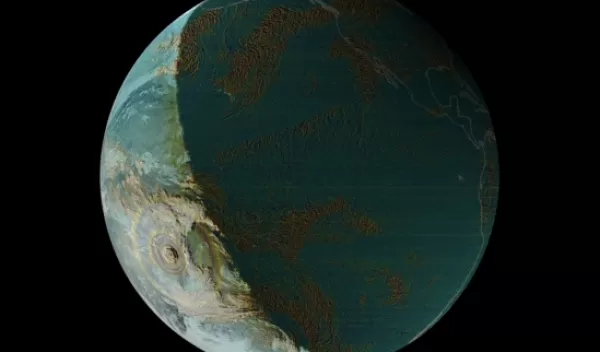
Tonga volcano eruption's echoes heard 6,200 miles away
The Hunga volcano ushered in 2022 with a bang, devastating the island nation of Tonga and sending aid agencies, and Earth scientists, into a flurry of activity. It had been nearly 140 years since an eruption of this scale shook the Earth.
The University of California, Santa Barbara's Robin Matoza led a team of 76 scientists from 17 nations to characterize the eruption's atmospheric waves, the strongest recorded from a volcano since the 1883 Krakatau eruption.
The U.S. National Science Foundation-supported team's work, compiled in an unusually short amount of time, details the size of the waves originating from the eruption, which the researchers found were on par with those from Krakatau.
"Understanding the global impacts of this extraordinary volcanic event would not be possible without this team of scientists combining an unprecedented set of Earth observations," said Eva Zanzerkia, a program director in NSF's Division of Earth Sciences. "This effort could transform how we research natural hazards and the connections between the deep Earth, atmosphere and oceans."
The data provide exceptional resolution of the evolving wavefield, the researchers said. Their resulting paper, published in the journal Science, is the first comprehensive account of the eruption's atmospheric waves.
Evidence suggests that an eruption on January 14, 2022, sank the volcano's main vent below sea level, priming the massive explosion the following day. That next-day eruption generated a variety of different atmospheric waves -- including booms heard 6,200 miles away in Alaska.
It also created a pulse that caused the unusual occurrence of a tsunami-like disturbance an hour before the actual seismically-driven tsunami began. "This atmospheric-waves event was unprecedented in the modern geophysical record," said lead author Matoza.
"The atmospheric waves were recorded globally across a wide frequency band," added co-author David Fee of the University of Alaska Fairbanks. "By studying this remarkable dataset we will better understand acoustic and atmospheric wave generation, propagation and recording. Our hope is that we will be better able to monitor volcanic eruptions and tsunamis by understanding the atmospheric waves from this eruption."
